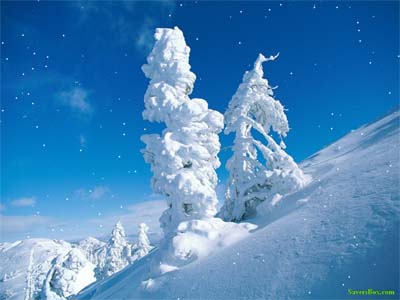Snow crystals form when tiny supercooled cloud droplets (approx 10μm in diameter) freeze. These droplets are able to remain liquid at temperatures colder than 0°C because in order to freeze, a few molecules in the liquid droplet need to get together by chance to form an arrangement close to that in an ice lattice; then the droplet freezes around this 'nucleus'. Experiments show that this 'homogeneous' nucleation of cloud droplets only occurs at temperatures colder than -35°C.In warmer clouds an aerosol particle or 'ice nucleus' must be present in (or in contact with) the droplet to act as a nucleus. Our understanding of what particles make efficient ice nuclei is poor - what we do know is they are very rare compared to that cloud condensation nuclei which liquid droplets form on. Clays, desert dust and biological particles may be effective, although to what extent is unclear. Artificial nuclei include Silver Iodide and dry ice, and these form the basis of cloud seeding.
Once a droplet has frozen, it grows in the supersaturated environment (air saturated with respect to liquid water is always supersaturated with respect to ice) and grows by diffusion of water molecules in the air (vapour) onto the ice crystal surface where they are deposited. Because the droplets are so much more numerous than the ice crystals (because of the relative numbers of ice vs droplet nuclei) the crystals are able to grow to hundreds of micrometres or millimetres in size at the expense of the water droplets (the Wegner-Bergeron-Findeison process). The corresponding depletion of water vapour causes the droplets to evaporate, meaning that the ice crystals effectively grow at the droplets' expense. These large crystals are an efficient source of precipitation, since they fall through the atmosphere due to their weight, and may collide and stick together in clusters (aggregates). These aggregates are snowflakes, and are usually the type of ice particle which falls at the ground. The exact details of the sticking mechanism remains controversial (and probably there are different mechanisms active in different clouds), possibilities include mechanical interlocking, sintering, electrostatic attraction as well as the existence of a 'sticky' liquid-like layer on the crystal surface.
The individual ice crystals often have an hexagonal symmetry. Although the ice is clear scattering of light by the crystal facets and hollows/imperfections mean that the crystals often appear white in colour.    
|